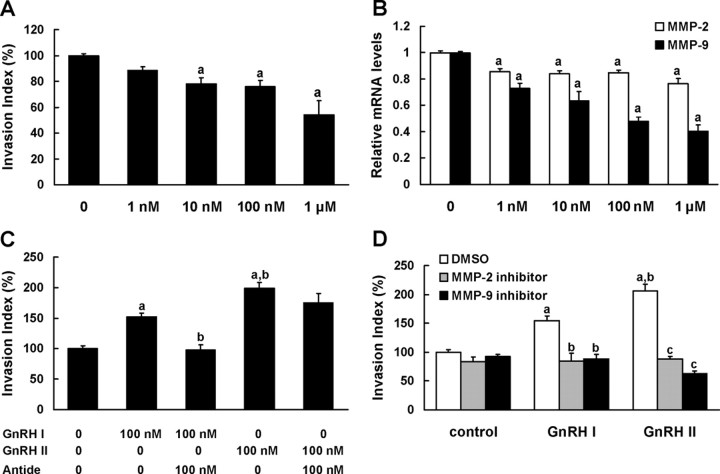Fig. 1.
GnRH I and GnRH II enhance EVT cell invasion via MMP-2 and MMP-9 activities. A, The EVTs were cultured in the presence or absence of increasing concentrations (1 nm to 1 μm as indicated) of Antide, a GnRHR antagonist, to block the actions of endogenous GnRH, and their invasive capacities were analyzed by invasion assay. B, Real-time PCR analysis revealing MMP-2 and MMP-9 mRNA levels in EVTs cultured in the presence or absence of increasing doses of Antide (1 nm to 1 μm) for 24 h. C, Invasion assay depicting the invasive capacities of EVTs treated with 100 nm GnRH I or GnRH II in the presence or absence of 100 nm Antide. D, Invasion assay of EVTs that were treated with GnRH I or GnRH II (100 nm) in the presence or absence of pretreatment with MMP-2 inhibitor (10 μm), MMP-9 inhibitor (10 μm), or vehicle (0.1% DMSO). The data derived from at least three independent sets of experiments were standardized to the corresponding control, and the statistical results are presented in the column graphs. a, P < 0.05 vs. control; b, P < 0.05 vs. treatment with GnRH I alone; c, P < 0.05 vs. treatment with GnRH II alone.

